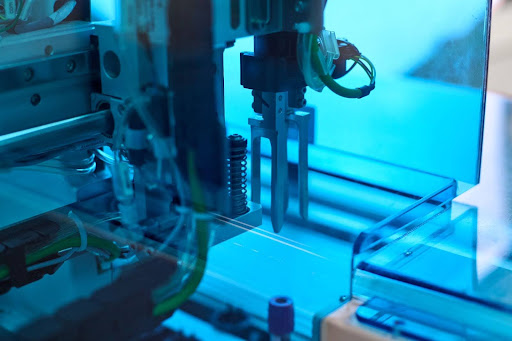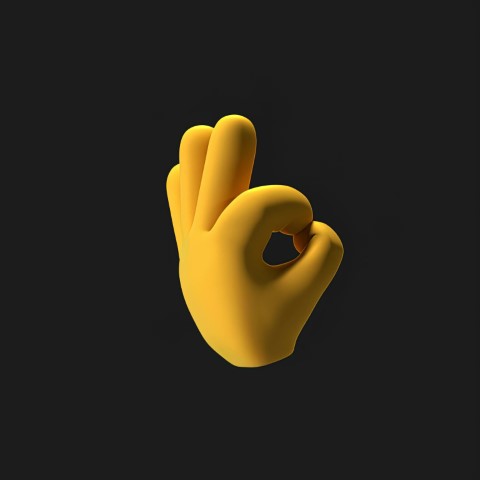
Discover the future – How Rapid Prototyping 3D Printing is enhancing Plastic Manufacturing
Blog
Discover the future – How Rapid Prototyping 3D Printing is enhancing Plastic Manufacturing
Authored By: SDI Plastics
The use of rapid prototyping 3D printing technology is about to usher in a new industrial revolution in the manufacturing sector. Also known as additive manufacturing, 3D printing builds objects layer-by-layer based on digital designs. This innovative approach is accelerating prototype development, enabling customisation, and bringing to life the product vision very early on in the product development process in plastic manufacturing.
The global market for 3D printing reached $13.8 billion in 2020 and is projected to exceed $34 billion by 2026, registering a remarkable 21%+ compound annual growth rate (CAGR). The Asia-Pacific region dominated the overall market in 2020 with a 35% market share, followed closely by North America at 31%.
A quick introduction to rapid prototyping
Rapid prototyping (RP) refers to a group of techniques used to quickly fabricate a scale model of a physical part or assembly using three-dimensional computer-aided design (CAD) data.
Rapid prototyping uses an additive process to build the model by layer-by-layer addition of material. This allows functional prototypes and concept models to be created much faster and cheaper than with traditional subtractive machining methods.
The average time to get from CAD files to a holding-in-your-hand prototype is typically 1 to 3 days, depending on size and complexity.
- Rapid prototyping has enhanced product development by enabling designers and engineers to quickly explore many design iterations
- Instead of painstakingly creating drawings, waiting for a machine shop to fabricate parts, and making revisions over weeks or months, design improvements and refinements can now be modelled, refined, and tested in a matter of hours or days
- This accelerated workflow allows product developers to gather customer feedback early on and make improvements while they are still relatively easy and cost-effective
Companies are using rapid prototyping technologies to dramatically shorten product development cycles, reduce costs, and gain a competitive advantage with innovative new products that better meet customer needs.
Rapid prototyping methods
There are several rapid prototyping technologies available, each with unique capabilities. Four of the most widely used processes are:
1. Stereolithography (SLA)
This uses an ultraviolet laser to selectively cure photosensitive liquid plastic resin layer-by-layer until the part is complete. It produces accurate, high-resolution plastic parts suitable for visualisation, form, and fit testing.
Materials are available with heat resistance, flexibility, translucency, and biocompatibility for medical applications.
2. Fused deposition modelling (FDM)
It extrudes heated thermoplastic filament through a nozzle tip that traces each layer of the part before depositing another layer on top. It is affordable and suitable for quick concept models needed early in the design process. Durable production parts are also possible with high-performance thermoplastics like ABS, polycarbonate, and ULTEM filaments.
3. Selective laser sintering (SLS)
This uses a laser to fuse powdered nylon materials layer-by-layer to build complex geometries unattainable with traditional tools. Finished parts have excellent mechanical properties, with options for glass-filled, aluminium-filled, and carbon fibre-reinforced materials.
No additional curing is needed, and unused powder provides inherent support without support removal.
4. Multi-jet fusion (MJF)
Yes, simultaneously jets a fusing agent and detail agent onto nylon powder layers, which are then UV-cured layer-by-layer until the part is complete. Excellent mechanical properties rival injection moulding. Minimal post-processing over SLS with a smooth finish and fine feature resolution capability.

Applications of rapid prototyping in plastic manufacturing
Rapid prototyping excels at facilitating better products faster by enabling validation of design, fit, and function throughout the new product development process. Common applications include:
- Concept models – Rough 3D replicas, scaled models, ergonomic studies, and aesthetic explorations. Validates basic size and appearance faster than sculpting foam or clay.
- Functional prototypes – Simulates production parts for testing under real-world conditions. Confirms assembly fit and evaluates field performance and suitability for intended use through testing.
- Manufacturing tools – Produces durable custom fixtures, jigs, drill guides, and other manufacturing tools quickly without expensive tooling. Excellent for optimising workflow on the production floor.
- End-use parts – For short-run manufacturing without the high cost of hard tooling, 3D printing can produce durable parts for real customer use. Aerospace, medical, dental, and motorsports industries now regularly use 3D-printed production parts.
Rapid tooling for plastic injection moulding
While prototyping concentrates on modelling new product designs, rapid tooling focuses on quickly and economically creating moulds for plastic injection moulding. There are two approaches to rapid tooling.
The first is Direct Tooling. Direct tooling fabricates mould inserts directly on large-scale 3D printers to enable injection moulding without the typical 4-6-week delay for conventional machined tools. Very short runs (10–100 parts).
The second is Indirect Tooling. Indirect tooling uses the 3D-printed model to create tooling via vacuum casting or spray metal deposition onto the prototype surface. Typical run sizes are less than 5000 units, and then hard tooling is made.
Rapid tooling delivers injection-moulded prototypes and low-volume parts in 2–10 days—significantly faster than the 4–12 weeks typical for CNC machining metal moulds on contract. This enables small-scale manufacturing to fill gaps in funding cycles or evaluate markets, while advanced development continues for optimised production-ready design solutions.
Benefits of integrating 3D printing
Incorporating 3D printing into product development and manufacturing engineering offers compelling benefits:
- Faster Time-to-Market: Fail fast, learn fast mentality. Test concepts and make adjustments immediately without waiting weeks or months for parts. Go from CAD to functional prototype overnight in some cases.
- Design Flexibility: Limitless geometric freedom to innovate. Produce shapes impossible to CNC machine or injection mould. Complex assemblies are consolidated into single parts.
- Cost Efficiency: Eliminate expensive tooling that becomes scrap with every design change. Save thousands in machining costs by optimising designs virtually rather than physically.
- Sustainability: Additive manufacturing versus wasteful subtractive methods results in significantly less scrap material use since you only use the required material per part.
The future of 3D printing in manufacturing
The future of 3D printing in manufacturing holds immense promise, poised to redefine the very fabric of production processes across industries. As technology continues to advance, 3D printing is expected to play a pivotal role in enabling unprecedented levels of customisation, efficiency, and cost-effectiveness.
The ability to fabricate intricate and complex designs with precision opens avenues for creating highly specialised components tailored to specific requirements. Furthermore, the integration of advanced materials and sustainable practices in 3D printing holds the potential to revolutionise the environmental impact of manufacturing. As research and development in this field accelerates, the future envisions a manufacturing landscape where Rapid Prototyping 3D Printing is not just a complementary tool but a transformative force, empowering innovation and reshaping traditional manufacturing paradigms.
Conclusion
Rapid prototyping technologies are already replacing slow, expensive traditional product development methods across many industries. As the capabilities of industrial 3D printers continue to improve with higher part quality, accuracy, and material choices, adoption will only accelerate. 3D printing removes barriers and frees product developers to experiment with more design iterations thanks to fast turnaround times and lower costs.
Savvy manufacturers are seizing a competitive advantage by integrating additive technologies into their operations for increased innovation, flexibility, and sustainability. The business case for rapid prototyping and manufacturing with industrial 3D printing grows stronger each year.
By getting started now, manufacturers can get ahead of the experience curve and optimise processes for more agile responses to changing customer demands and market conditions.
3D printing will undoubtedly transform manufacturing towards more customer-centric and sustainable production models, and progressive companies recognising and leveraging its potential will shape the future.
Book your free consultation
Give us a call to book your free consultation and learn how much value can be added to your business with SDI Plastics by your side.